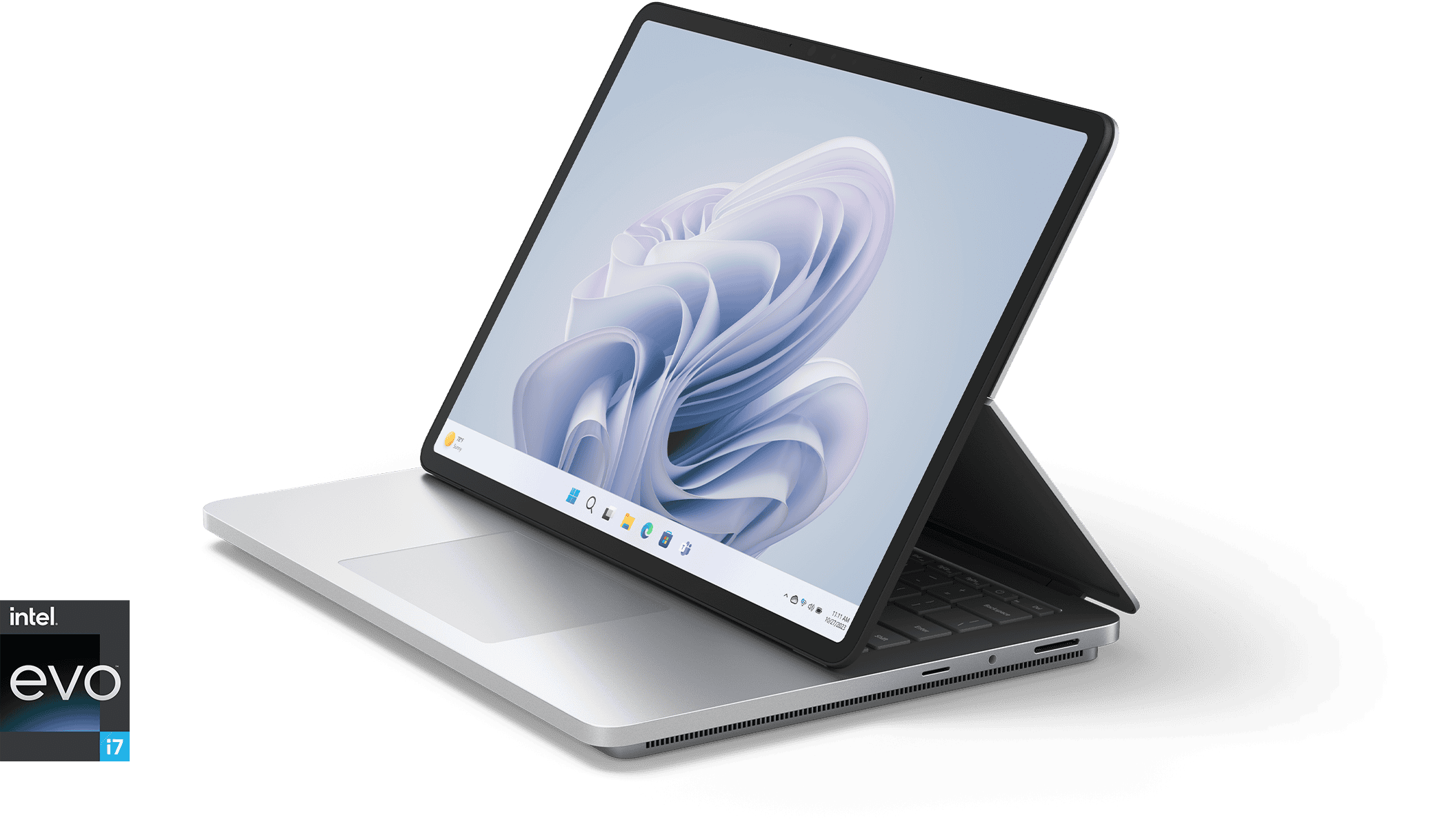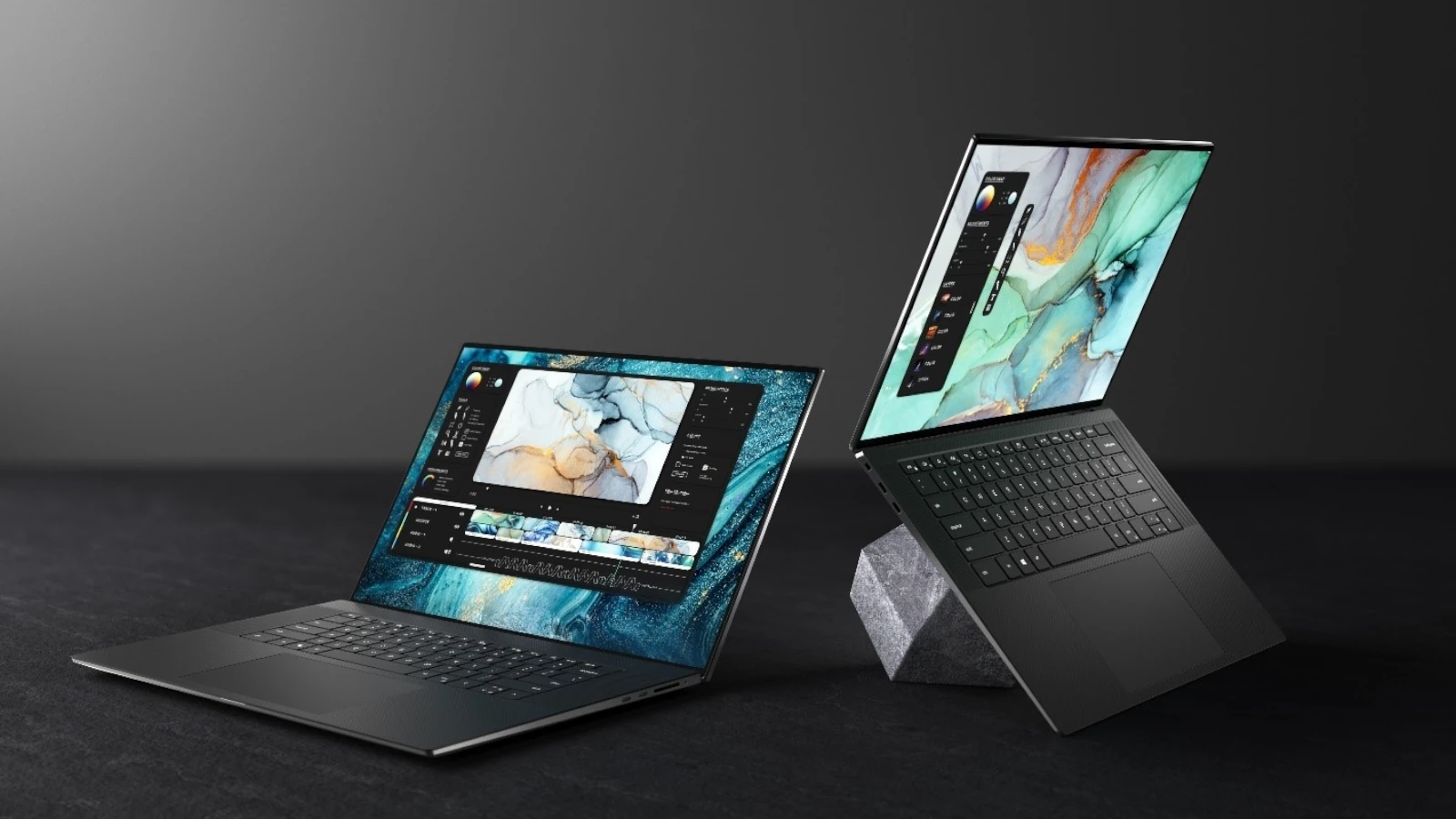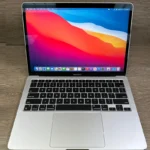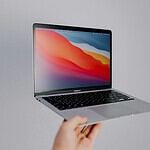MacBook Pro alternatives have gained significant attention in recent years. These laptops offer powerful performance and sleek designs to rival Apple’s popular devices. Many manufacturers now produce high-end notebooks that compete directly with MacBook Pros in terms of processing power, graphics capabilities, and build quality.
Consumers seeking MacBook Pro-level performance have more options than ever before. From ultraportable 14-inch models to large 16-inch workstation replacements, Windows and Linux laptops now match or exceed MacBook Pros in key areas. This expanded market gives professionals and power users viable choices beyond Apple’s ecosystem.
Top 10 MacBook Pro Alternatives
While the MacBook Pro is a popular choice, there are many excellent alternatives available that offer comparable or even superior features at various price points. Here are ten of the best MacBook Pro alternatives:
1. Dell XPS 15/17
- Pros: Stunning OLED display options, powerful performance with Intel CPUs and Nvidia GPUs, excellent build quality, comfortable keyboard.
- Cons: Can be expensive, some thermal limitations under heavy load.
2. Microsoft Surface Laptop Studio 2

- Pros: Unique and versatile design with a convertible touchscreen, excellent performance for creative tasks, comfortable keyboard and touchpad.
- Cons: Just-okay color accuracy for professional work, expensive.
3. Asus Zenbook Pro 14 Duo OLED
- Pros: Innovative dual-screen design for enhanced productivity, vibrant OLED display, powerful performance with AMD Ryzen CPUs and Nvidia GPUs.
- Cons: Can be bulky and heavy, expensive.
4. Lenovo Yoga 9i
- Pros: Stylish 2-in-1 design with a rotating soundbar, beautiful OLED display, strong performance with Intel CPUs, excellent battery life.
- Cons: Limited port selection, can be expensive.
5. Razer Blade 14/16/18
- Pros: Powerful gaming performance with AMD Ryzen CPUs and Nvidia GPUs, sleek and stylish design, excellent displays with high refresh rates.
- Cons: Can get hot under heavy load, expensive.
6. HP Spectre x360 14/16
- Pros: Premium 2-in-1 design with a gem-cut chassis, vibrant OLED display options, solid performance with Intel CPUs, good battery life.
- Cons: Can be expensive, some thermal limitations.
7. LG Gram 16/17
- Pros: Incredibly lightweight design, large displays with excellent color accuracy, long battery life, surprisingly powerful performance.
- Cons: Can feel plasticky compared to other premium laptops, limited port selection.
8. Samsung Galaxy Book3 Pro/Ultra
- Pros: Gorgeous AMOLED displays, powerful performance with Intel CPUs and Nvidia GPUs, lightweight and portable design, good battery life.
- Cons: Can be expensive, some software bloat.
9. Acer Swift 5
- Pros: Lightweight and portable design, good performance with Intel CPUs, affordable price point.
- Cons: Average battery life, display could be brighter.
10. Framework Laptop
- Pros: Highly modular and repairable design, allowing for easy upgrades and customization, good performance with Intel CPUs.
- Cons: More expensive than similarly specced laptops, requires some technical knowledge for upgrades.
Choosing the Right Alternative
Consider these factors when choosing a MacBook Pro alternative:
- Performance: Determine your CPU, GPU, and RAM requirements based on your workload.
- Display: Consider size, resolution, color accuracy, and refresh rate.
- Portability: Evaluate weight, size, and battery life.
- Budget: Set a price range and compare features within your budget.
- Operating System: Decide between Windows, Chrome OS, or Linux based on your needs and preferences.
Beyond Laptops: Exploring Tablets with Keyboard Accessories
If you’re looking for a more portable and versatile option, consider a tablet with a keyboard accessory. These devices offer the portability of a tablet with the productivity of a laptop. Some popular options include:
- iPad Pro with Magic Keyboard: The iPad Pro offers a stunning display, powerful performance with Apple’s M-series chips, and a wide range of creative apps. The Magic Keyboard provides a comfortable typing experience and trackpad support.
- Samsung Galaxy Tab S8 Ultra with Book Cover Keyboard: The Galaxy Tab S8 Ultra boasts a large and vibrant AMOLED display, powerful performance with a Snapdragon processor, and S Pen support for drawing and note-taking. The Book Cover Keyboard offers a comfortable typing experience and a built-in trackpad.
- Microsoft Surface Pro 9 with Signature Keyboard: The Surface Pro 9 features a sleek and portable design, a vibrant PixelSense display, and solid performance with Intel CPUs. The Signature Keyboard offers a comfortable typing experience and a built-in trackpad.
Tablets with keyboard accessories offer a compelling alternative to traditional laptops, especially for users who value portability and versatility.
Key Takeaways
- Numerous laptops now offer comparable performance to MacBook Pros
- Options range from ultraportable to large workstation replacements
- Expanded market provides professionals more choices beyond Apple
Top Choice for 14-Inch MacBook Pro Replacement
Dell XPS 14 (9440)
The Dell XPS 14 (9440) stands out as a strong competitor to the 14-inch MacBook Pro. It boasts a sleek design with a smooth touchpad and LED function row. The laptop offers impressive battery life, ideal for on-the-go professionals.
Users can opt for a GeForce RTX 4050 GPU, enhancing graphics performance. The XPS 14 provides various memory and storage configurations to suit different needs. Its webcam delivers clear video quality for remote work and calls.
While the XPS 14 excels in many areas, it comes with a premium price tag. The device is heavier than expected for its size class. Some users may find the keyboard less comfortable than desired. The laptop uses a dongle for HDMI and USB-A connections, which may be inconvenient for some.
Top Choice for 16-Inch MacBook Pro Replacement
Dell XPS 16 (9640)
The Dell XPS 16 (9640) stands out as a strong competitor to the 16-inch MacBook Pro. It boasts a slim design and a stunning 4K OLED touchscreen. The laptop packs powerful performance with an Intel Core Ultra 7 processor and NVIDIA GeForce RTX 4070 graphics card.
Battery life is impressive, lasting through long work sessions. While pricey, it offers great value. The XPS 16 uses only USB-C ports, but includes an adapter for USB-A and HDMI connections.
Top Mid-Range MacBook Pro Alternative
Lenovo Legion Slim 5 Gen 8 (14.5-Inch)
The Lenovo Legion Slim 5 Gen 8 (14.5-Inch) stands out as a powerful MacBook Pro competitor. Its OLED screen delivers vibrant visuals, while the aluminum design adds a touch of elegance. The laptop boasts impressive performance and long battery life.
Key features:
- Vivid OLED display
- Strong performance
- Extended battery life
- Sleek aluminum build
Drawbacks include non-upgradeable RAM and noisy fans during heavy use. The speakers offer average sound quality. Despite these minor issues, the Legion Slim 5 Gen 8 provides excellent value for its price point.
Top MacBook Pro Rival for Intensive Media Production
Asus ProArt P16 (H7606)
The Asus ProArt P16 (H7606) stands out as a powerful alternative for creative professionals. Its lightweight yet sturdy build houses a fast processor and graphics card. The OLED screen delivers stunning visuals, while AI-enhanced features boost productivity.
High-quality audio adds to its appeal. However, the device can get hot and noisy during heavy use. The display’s refresh rate is standard. For media editing tasks, this laptop competes well with options like the Razer Blade 16.
Top MacBook Pro Replacement for Creative Work and Gaming
Alienware m18 R2
The Alienware m18 R2 stands out as a powerhouse for creative professionals and gamers. It boasts impressive processing capabilities and stellar gaming performance. The laptop offers a QHD+ display with a 165Hz refresh rate, perfect for smooth visuals. For competitive gamers, there’s an optional FHD+ screen with a blazing-fast 480Hz refresh rate.
A unique feature is the optional Cherry MX mechanical keyboard, providing satisfying tactile feedback. While the m18 R2 excels in performance, it’s worth noting its hefty weight and premium price tag. The screen brightness could be improved, but overall, this gaming laptop delivers exceptional power for demanding tasks.
Top Business Ultrabook: Lenovo ThinkPad X1 Carbon Gen 12
Lenovo ThinkPad X1 Carbon Gen 12
The Lenovo ThinkPad X1 Carbon Gen 12 stands out as a premium ultraportable laptop for business users. Its sleek design and lightweight build make it ideal for professionals on the go. The device features a top-notch keyboard, perfect for long typing sessions.
The laptop boasts a crisp OLED display, offering vibrant colors and sharp visuals. Connectivity options are plentiful, including USB-A, HDMI, and USB-C ports. However, the X1 Carbon lacks an SD card slot.
While performance and battery life are solid, they don’t lead the pack. The high price tag may give some buyers pause. Despite this, the ThinkPad X1 Carbon Gen 12 remains a strong choice for business users seeking a reliable, feature-rich ultrabook.
Top-Tier MacBook Pro Substitute for Professional Tasks
Dell Precision 5690
The Dell Precision 5690 stands out as a formidable MacBook Pro alternative for demanding workloads. Its 4K OLED touchscreen delivers stunning visuals, while the sleek design houses powerful components. The keyboard offers crisp feedback for extended typing sessions.
Performance-wise, the Precision 5690 excels, though it may not match the raw power of larger workstations. It lacks USB-A ports and a webcam cover, which some users might miss. The high price tag reflects its premium status in the mobile workstation market.
Top MacBook Pro Alternative for Digital Artists Using Stylus Input
Microsoft Surface Laptop Studio 2
The Microsoft Surface Laptop Studio 2 stands out as a strong choice for digital artists seeking a MacBook Pro alternative. This device offers unique features tailored to creative professionals.
The Surface Laptop Studio 2 boasts a convertible design. Users can switch between laptop, tablet, and studio modes. This flexibility allows artists to work comfortably in various positions.
Microsoft has equipped this device with powerful components:
- Latest Intel processors
- NVIDIA graphics options
- Dedicated neural processing unit
These specs ensure smooth performance for demanding creative tasks.
The display is a key feature for artists:
- 14.4-inch PixelSense Flow touchscreen
- 120Hz refresh rate
- 2400 x 1600 resolution
This screen provides crisp visuals and responsive touch input. The high refresh rate reduces lag when using a stylus, enhancing the drawing experience.
Connectivity has improved in this model:
- USB-A port added
- microSD card slot included
- Thunderbolt 4 ports retained
These additions address previous limitations and offer more flexibility for peripherals and storage.
Battery life is impressive, allowing for extended use away from power outlets. This is crucial for artists who prefer to work on location or in various settings.
The Surface Slim Pen 2 complements this device well. It attaches magnetically to the laptop’s base, where it also charges. This clever design keeps the stylus accessible and ready for use.
Some considerations for potential buyers:
- The Surface Pen is not included and must be purchased separately.
- The price point is high, reflecting its premium positioning.
- Color accuracy, while good, may not meet the needs of the most demanding professionals.
| Pros | Cons |
|---|---|
| Versatile 2-in-1 design | Expensive |
| Powerful performance | Stylus sold separately |
| 120Hz touch display | Limited color gamut |
| Improved port selection | |
| Long battery life |
The Surface Laptop Studio 2’s AI capabilities currently focus on Windows Studio Effects. These features enhance video calls but don’t yet extend to creative applications. Future updates may expand AI functionality for artists.
For digital artists transitioning from MacBook Pro, the Surface Laptop Studio 2 offers comparable power with added versatility. The touch and pen support provide a more direct interaction with digital content. While it comes at a premium price, the unique form factor and tailored features make it a compelling option for creative professionals.
Processor Power: Competing with Apple’s Silicon
Apple’s M-Series Chips
Apple’s M-series processors have revolutionized Mac performance. These chips combine CPU and GPU functions into a single system-on-chip (SoC). The M1 chip started this trend in 2020, followed by M2 and M3 versions.
The latest M4 chips power the newest MacBook Pro models. These processors come in different tiers:
- Base M4
- M4 Pro
- M4 Max
Each tier offers increased performance for demanding tasks. Creative professionals benefit from these powerful chips for tasks like:
- Video editing
- 3D rendering
- Music production
- Virtual reality development
The M-series chips allow Apple to optimize hardware and software integration. This results in impressive speed and efficiency gains.
Windows CPU Options
Intel and AMD dominate the Windows laptop processor market. Both companies offer chips that rival Apple’s M-series performance.
Intel’s latest offerings include:
- Core i5/i7/i9 (14th Gen “Raptor Lake Refresh”)
- Core Ultra 5/7/9 (AI-focused)
AMD’s current lineup features:
- Ryzen 5/7/9 (8000 series)
- Ryzen AI 300 (AI-optimized)
Qualcomm has also entered the high-performance laptop market with its Snapdragon X processors. These Arm-based chips focus on AI capabilities and energy efficiency.
| Processor Family | Key Features | Best For |
|---|---|---|
| Intel Core i/Ultra | High core counts, AI acceleration | General performance, content creation |
| AMD Ryzen | Strong multi-core performance | Media editing, multitasking |
| Qualcomm Snapdragon X | AI optimization, energy efficiency | Thin and light laptops, long battery life |
For 13-14 inch laptops, consider:
- Intel Core i7 or Core Ultra 7
- AMD Ryzen 7
These chips offer a good balance of performance and efficiency for most creative tasks.
For 15-17 inch laptops and desktop replacements, look at:
- Intel Core i9 or Core Ultra 9
- AMD Ryzen 9
These high-end processors provide workstation-level performance for demanding applications.
Key factors to consider when choosing a processor:
- Core count
- Thread count
- Clock speed
- AI acceleration capabilities
- Thermal design power (TDP)
Recent Intel Core i7 processors boast up to 20 cores and 28 threads. Top-tier Core i9 chips can reach 24 cores and 32 threads. These high core counts enable excellent multitasking and parallel processing.
AMD Ryzen processors also offer competitive core and thread counts. They excel in multi-threaded tasks common in content creation workflows.
The newest Intel Core Ultra and AMD Ryzen AI chips include dedicated Neural Processing Units (NPUs). These NPUs accelerate AI-related tasks without burdening the main CPU or GPU.
Qualcomm’s Snapdragon X processors bring AI capabilities to Windows on Arm laptops. These chips offer strong performance in a power-efficient package. However, some Windows software compatibility issues remain.
When comparing processors, remember that raw specifications don’t tell the whole story. Factors like microarchitecture improvements and software optimization play crucial roles in real-world performance.
To find the best MacBook Pro alternative, consider these tips:
- Identify your primary workloads (e.g., video editing, 3D rendering, coding)
- Determine your portability needs (13-14″ vs 15-17″ laptops)
- Consider your budget constraints
- Check benchmark results for specific tasks relevant to your work
- Read reviews of laptops with your chosen processor
For tasks similar to those performed on a 14-inch MacBook Pro, a Windows laptop with a Core i7, Core Ultra 7, or Ryzen 7 processor should suffice. These chips offer strong performance for most creative applications.
If you need power comparable to a 16-inch MacBook Pro, opt for a Core i9, Core Ultra 9, or Ryzen 9 processor. These high-end chips can handle intensive workloads like 4K video editing or complex 3D rendering.
Keep in mind that processor choice affects other aspects of laptop performance:
- Battery life
- Heat generation
- Overall system cost
Higher-performance processors generally consume more power and generate more heat. This can impact battery life and require more robust cooling solutions.
When selecting a MacBook Pro alternative, consider the entire package:
- Display quality
- GPU performance
- RAM capacity
- Storage options
- Port selection
- Build quality
A powerful processor alone doesn’t guarantee a great laptop experience. Ensure that other components match your performance needs and workflow requirements.
As the processor landscape evolves, keep an eye on emerging technologies:
- Improved AI acceleration
- Enhanced power efficiency
- Increased core counts
- Faster memory interfaces
These advancements will continue to push the boundaries of laptop performance, offering creative professionals more powerful tools for their work.
Graphics Power: Evaluating Laptop GPUs
A robust graphics processing unit (GPU) is crucial for laptops designed for creative tasks. Video editing, 3D modeling, and animation require significant graphical horsepower. While mobile GPUs don’t match desktop counterparts, they still offer impressive performance.
Not all users need a dedicated GPU. Those focused on data analysis or word processing can opt for integrated graphics. This allows for budget allocation to other components like the CPU and RAM.
Windows laptops typically feature GPUs from Nvidia or AMD. Nvidia dominates the market with its GeForce and RTX A series. GeForce GPUs cater to consumers and gamers, while RTX A series targets professionals in fields like CGI and CAD.
Nvidia’s RTX branding signifies advanced ray-tracing capabilities. Common options include:
- RTX 3050: Entry-level, previous generation
- RTX 4050 and 4060: Mid-range, current generation
- RTX 4070, 4080, and 4090: High-end performers
These high-end GPUs often surpass Apple’s M-series chips in graphics performance.
| GPU Model | Performance Level | Suitable Tasks |
|---|---|---|
| RTX 3050 | Entry | Light video editing, basic 3D work |
| RTX 4060 | Mid-range | 1080p gaming, moderate 3D rendering |
| RTX 4090 | High-end | 4K gaming, complex 3D animation |
Intel’s integrated Iris Xe graphics lag behind Apple’s M3 chip. The M3 can handle games like Baldur’s Gate 3 at 1080p, showcasing its capabilities.
When selecting a laptop GPU, consider:
- Your specific workload requirements
- Budget constraints
- The balance between GPU power and other components
- Portability needs (stronger GPUs often mean larger, heavier laptops)
- Future-proofing for upcoming software demands
Remember, the most expensive GPU isn’t always necessary. Assess your needs carefully to avoid overspending on unused power or underpowering your creative work.
For professionals in visual fields, the RTX A series offers specialized features. These GPUs excel in tasks like real-time rendering and complex simulations. They often come with certified drivers for professional software, ensuring stability and optimal performance.
Gamers and content creators might prefer GeForce GPUs. These offer a good balance of performance and price for tasks like video editing and streaming. They also provide excellent gaming capabilities, making them versatile for work and play.
AMD’s Radeon GPUs are less common but still offer competitive performance. They can be a good choice for users who prefer AMD’s ecosystem or find them at attractive price points.
RAM, Storage, and Connectivity Options
Modern laptops require ample memory and storage to handle demanding tasks. Professional users should opt for at least 16GB of RAM, with 32GB or more recommended for video editing and other resource-intensive work. Some high-end workstations even offer up to 128GB of RAM for the most demanding applications.
Storage needs have also increased. A 1TB solid-state drive (SSD) is now considered the minimum for professional use. Users working with 4K video or large media files should consider 2TB or larger SSDs to avoid running out of space.
Connectivity options play a crucial role in laptop selection. USB-C has become the standard, offering faster data transfer speeds. Many content creator laptops feature Thunderbolt 3 or 4 ports with USB-C connectors. These ports provide excellent versatility and performance for connecting external devices and displays.
While USB-C dominates, some laptops still include USB Type-A ports for compatibility with older devices. Creative professionals often prefer laptops with dedicated video output ports like HDMI or DisplayPort for easy connection to external monitors.
SD card slots remain valuable for photographers and videographers who need to transfer media directly from their cameras. This feature eliminates the need for external card readers, streamlining workflow.
Here’s a quick comparison of common port options:
| Port Type | Data Transfer Speed | Use Cases |
|---|---|---|
| USB-C | Up to 40 Gbps | External drives, displays |
| Thunderbolt 4 | 40 Gbps | High-speed data, multiple displays |
| USB-A | Up to 10 Gbps | Legacy devices, peripherals |
| HDMI | Up to 48 Gbps | External displays, TVs |
| SD Card | Up to 985 MB/s | Camera memory cards |
When choosing a laptop, consider your specific needs:
- Video editors: Prioritize Thunderbolt ports for fast external storage
- Photographers: Look for built-in SD card readers
- Graphic designers: Ensure support for multiple high-resolution displays
Many laptops now feature OLED displays, offering vibrant colors and deep blacks. These screens can enhance visual work but may impact battery life. Consider the trade-off between display quality and power efficiency based on your usage patterns.
Long battery life remains a priority for mobile professionals. Look for laptops that can last through a full workday without needing a charge. Some models now offer 10+ hours of use on a single charge.
Touch displays have become more common, even on professional laptops. They can be useful for certain creative tasks but aren’t essential for all users. Weigh the benefits against potential added cost and reduced battery life.
MacBook Pro Alternative Pricing
Professional-grade laptops often come with hefty price tags. The cost of a MacBook Pro alternative can vary widely based on specifications and brand. Entry-level models start around $1,000, while high-end configurations can exceed $4,000.
Budget-friendly options exist, but they may lack the power and features of premium devices. Mid-range laptops, priced between $1,500 and $2,500, offer a good balance of performance and affordability. These machines typically include:
- Latest-generation processors
- Dedicated graphics cards
- High-resolution displays
- Ample RAM and storage
Top-tier alternatives to the MacBook Pro can cost $3,000 or more. These laptops boast:
| Feature | Specification |
|---|---|
| CPU | Intel Core i9 or AMD Ryzen 9 |
| GPU | NVIDIA RTX 3080 or AMD Radeon RX 6800M |
| RAM | 32GB to 64GB |
| Storage | 1TB to 4TB SSD |
| Display | 4K or higher resolution |
Buyers should consider their specific needs and budget when selecting a MacBook Pro alternative. Professionals requiring powerful hardware for tasks like video editing or 3D rendering may need to invest more. Students or casual users can often find suitable options at lower price points.
Remember to factor in additional costs such as software licenses, warranties, and accessories when budgeting for a new laptop. Some manufacturers offer customization options, allowing users to tailor their device to their needs and potentially save money on unnecessary features.
Choosing the Right MacBook Pro Alternative
Several compelling options exist for those seeking MacBook Pro alternatives. The Dell XPS 14 stands out as a top contender, offering powerful performance in a sleek design. It features high-end processors and impressive graphics capabilities, making it suitable for demanding tasks.
For users prioritizing graphics power, the ASUS ROG G16 presents a strong case. Its configuration options include the RTX 4080 GPU, rivaling the MacBook Pro M3 Max in performance.
Budget-conscious buyers might consider the Lenovo ThinkPad X1 Carbon. It combines reliability with portability, appealing to business users who need a dependable machine for everyday tasks.
The HP Spectre x360 offers versatility with its 2-in-1 design. Its touch screen and pen support provide flexibility for creative professionals.
Ultimately, the best choice depends on specific needs. Consider factors like performance requirements, budget, and preferred software ecosystem when selecting a MacBook Pro alternative.
Frequently Asked Questions
High-performance MacBook Pro rivals
Several laptops match or surpass MacBook Pro performance. The Dell XPS 14 offers comparable power in a sleek design. For graphics-intensive tasks, the MSI Raider GE78 HX packs a punch with its high-end processors and GPUs. The Asus ROG Zephyrus G14 balances power and portability, making it a strong contender.
Top Windows alternatives to MacBook Pro
Windows users have excellent MacBook Pro alternatives:
- Dell XPS 16 (9640)
- Lenovo ThinkPad X1 Carbon
- HP Spectre x360
- Razer Blade 15
These laptops offer premium build quality, powerful performance, and high-resolution displays similar to MacBook Pros.
Budget-friendly MacBook Air equivalents
For those seeking a MacBook Air experience at a lower price:
- Asus ZenBook 13
- Acer Swift 5
- HP Envy 13
- Lenovo Yoga 7i
These laptops provide slim designs, long battery life, and capable performance at more affordable price points.
Laptops outperforming MacBook Pro in specific areas
Some laptops excel beyond MacBook Pros in certain aspects:
| Laptop | Advantage |
|---|---|
| Razer Blade 15 | Higher refresh rate displays |
| Dell XPS 15 | More port options |
| Lenovo Legion 7i | Superior gaming performance |
| Microsoft Surface Laptop Studio | Versatile form factor |
Choosing a MacBook Pro alternative for professional use
When selecting a MacBook Pro alternative for work:
- Assess software compatibility
- Consider battery life for on-the-go use
- Evaluate build quality and durability
- Check port selection for peripherals
- Compare display quality and color accuracy
- Verify after-sales support and warranty options
Pros and cons of switching from MacBook Pro
Advantages of switching:
- Greater hardware customization options
- Access to a wider range of software
- Potential cost savings
Disadvantages:
- Loss of macOS-exclusive apps
- Adapting to a new operating system
- Possible reduction in resale value







